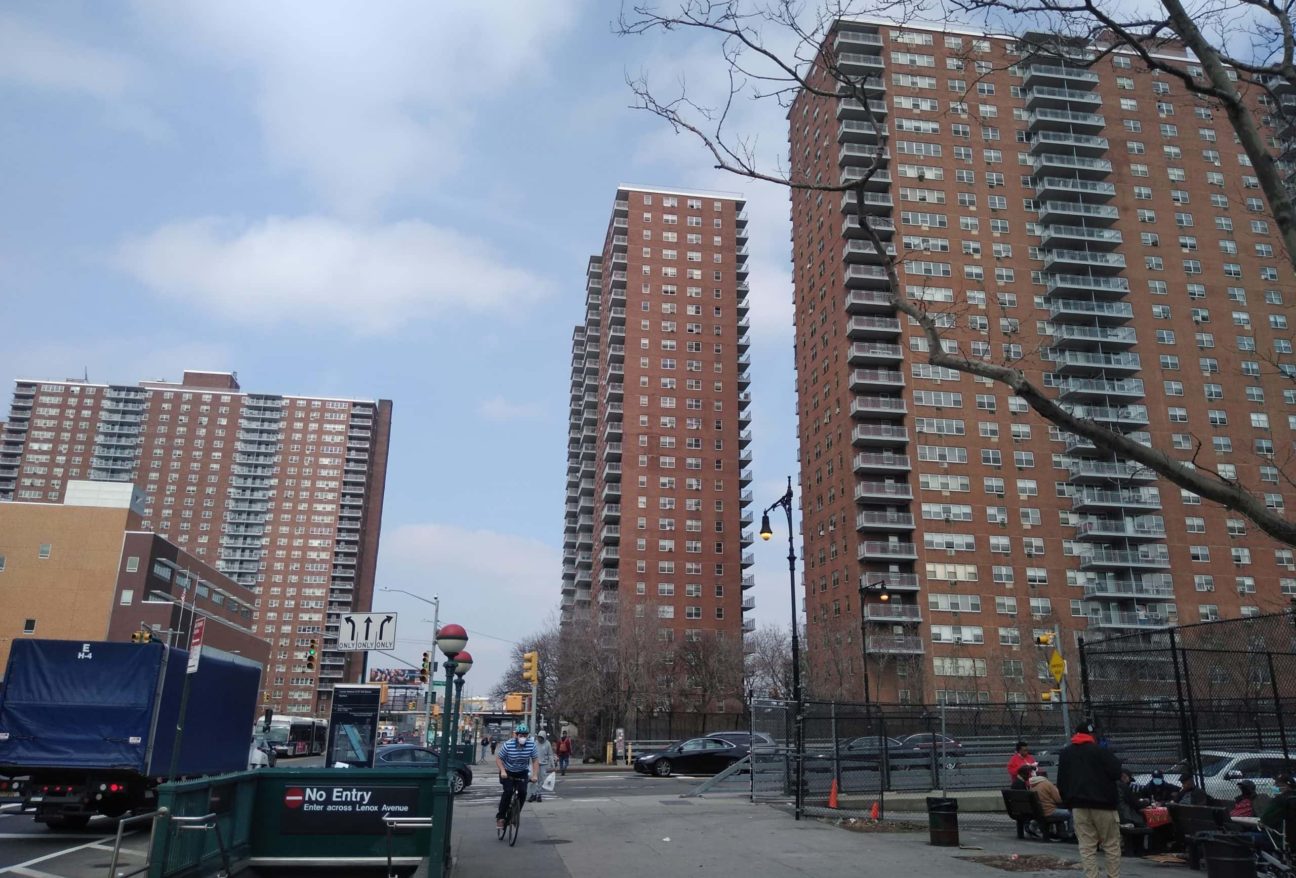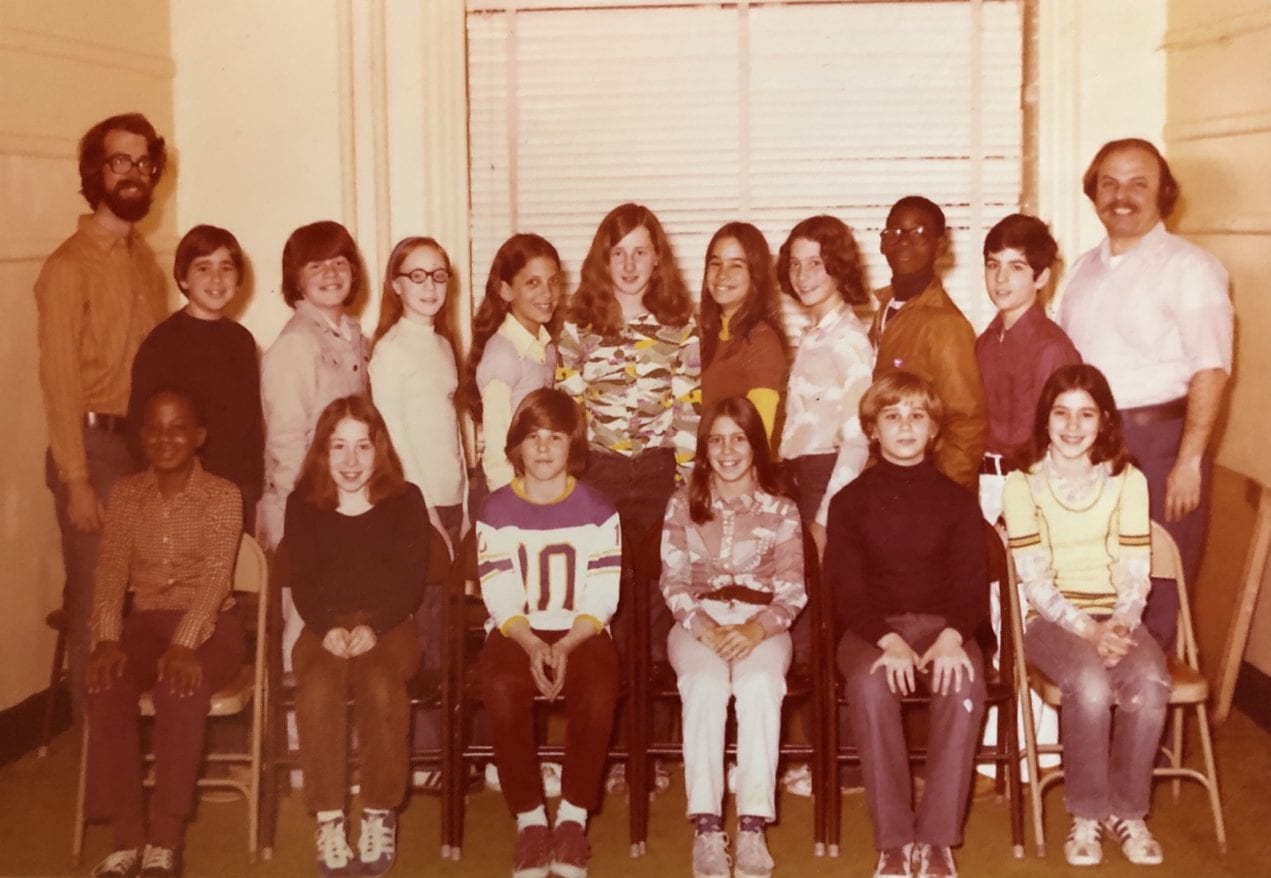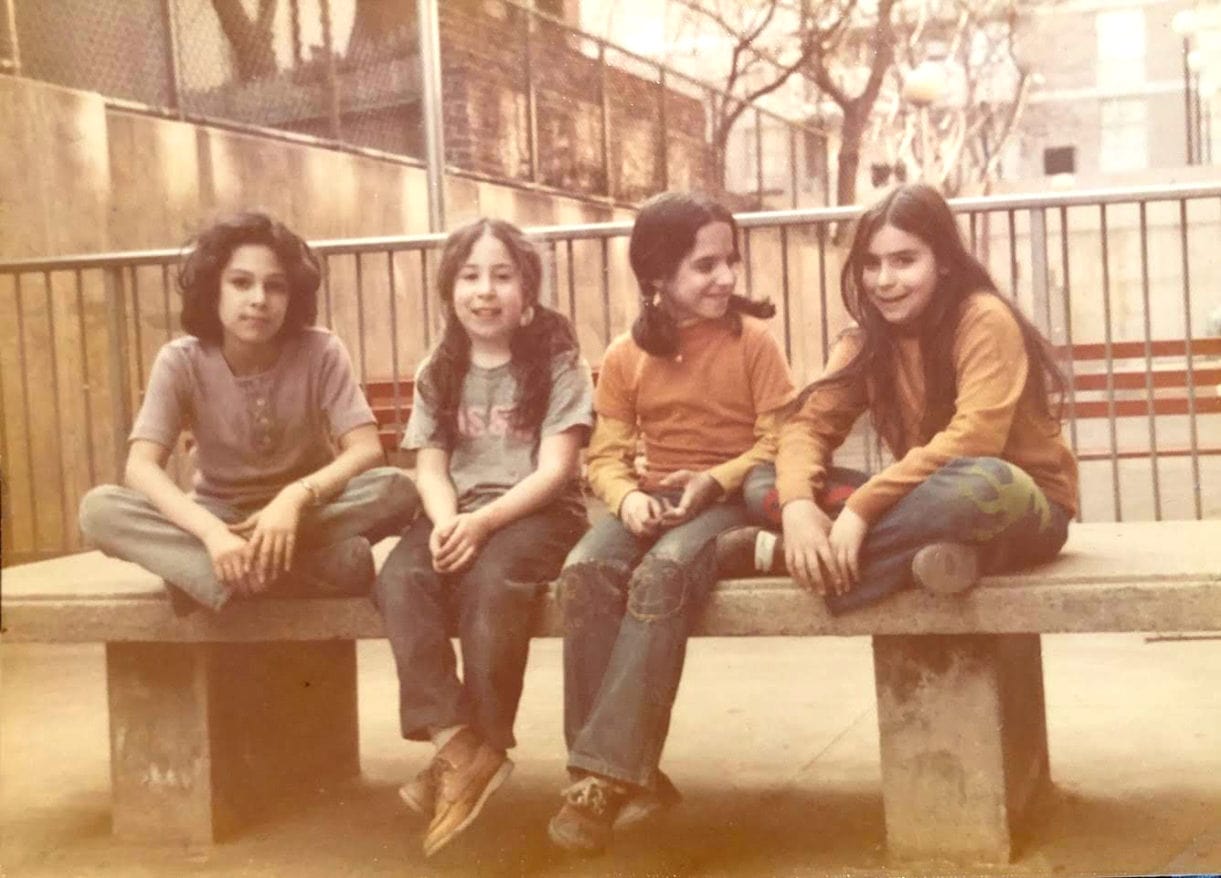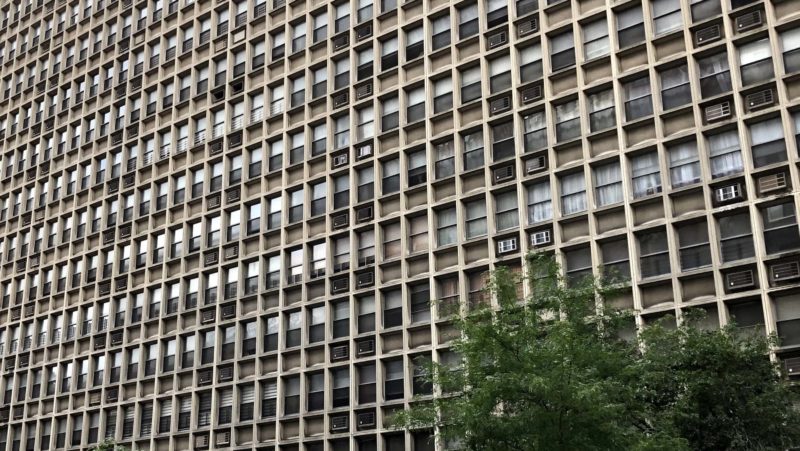In 1967, when I was four years old, my family moved into RNA House, at 150-160 West Ninety-Sixth Street between Amsterdam and Columbus Avenue in New York City. It was one of the first in a series of brutalist, no-frills, co-op super-slabs created at a time when the idea that “housing is a human right” was a guiding principle of politics, urban design, and planning. Each cooperator, as they were known, owned a share of the co-op upon purchase; if they left, they sold the share back for the same amount. The point was not to make a profit, but to live an affordable, safe, communal life in an integrated stable community. Those with earnings above a certain amount were ineligible to buy. My parents bought our three-bedroom subsidized apartment well below market rate, for $3,800.
After the Depression and World War II, there was a desperate need to construct housing for low- and middle-income American families. In response, President Truman passed the Housing Act of 1949, which greatly increased funding for public housing construction and expanded federal mortgage insurance. Truman declared: “How can we expect to sell democracy to Europe [via the Marshall Plan] until we prove that within the democratic system, we can provide decent homes for our people?” This was the peak of progressive government housing activism in New York City. Politicians, urban planners, and architects combined forces to socially engineer large swaths of slums into New York City Housing Authority (NYCHA) towers meant for the working class.
Soon after, combining public and private investment, New York State passed the 1955 Limited-Profit Housing Companies Act or Mitchell-Lama Housing program, designed for moderate- and middle-income New Yorkers like my family. The state gave developers low-interest loans, mortgages, and tax exemptions to build apartments contingent upon controlled rents and sales prices below market value for a twenty-year period, which allowed people to live with housing security and thrive. Once the twenty years passed, the buildings could either opt out of the program and privatize, or refinance under the same conditions and remain public. This opt-out provision, introduced in 1959 by Governor Nelson A. Rockefeller to encourage private investment, has contributed to NYC’s affordable housing crisis, by depleting affordable rentals and co-ops. Of over 260 Mitchell-Lama developments constructed as part of the 1955 Limited-Profit Housing Companies Act, approximately a third remain public.
RNA House was part of the West Side Urban Renewal Area plan (WSURA), spanning 87th to 97th Streets, between Amsterdam Avenue and Central Park, which built middle-income Mitchell-Lamas and low-income NYCHA rentals, and rehabilitated decaying brownstones. The Upper West Side was populated by wealthy, white families who lived in luxurious buildings with doormen, as well as by working-class Blacks and Puerto Ricans who lived in substandard tenement housing, and the WSURA aimed to retain the neighborhood’s integrated character. Since the 1970s, the scheme has been widely seen as one of the most successful urban planning projects in Manhattan’s history, changing the neighborhood into a thriving, diverse community, affordable to low- and middle-income people.
But the collectivist ethos guiding the WSURA plan began to erode in the ’90s, under Mayor Rudy Giuliani, when the city, as well as the state and federal government slashed funding for public housing. Today, especially after the developer interests-first policies of Mayor Michael Bloomberg, housing inequality has reached calamitous proportions. Homelessness has reached highs not seen since the Great Depression. The poor live in neglected, hazardous public housing projects or overcrowded apartments; the middle class is squeezed out, and mom-and-pop businesses are closing, unable to pay exorbitant rents. Storefronts stand vacant, while developers erect luxury towers at a rapid pace.
My former classmate and fellow cooperative housing alumnus Mondello Browner grew up in Esplanade Gardens, a massive Mitchell-Lama development in Central Harlem fifty blocks north of RNA House, consisting of 1,872 apartments in six 27-story red brick buildings. According to the New York Times, the development, along with six others in the neighborhood, comprised 6,502 apartments, “the largest concentration of middle-income Black families in the city.”
While living in separate subsidized Mitchell-Lama developments, Browner and I—he a Black man, I a Jewish, white woman—both escaped failing 1970s NYC public schools to attend the same left-leaning private high school, Columbia Grammar and Preparatory School (CGPS). When Browner and I attended, CGPS was intellectual, welcoming, and laid-back. We were taught a radical curriculum, studying communism, socialism, utopian movements, and the American Labor Movement. Many students were from Upper West Side, Jewish, left-leaning, intellectual and artistic families, some wealthier than others. Parents like mine encouraged open discussion about these subjects, grateful their kids weren’t being fed mainstream conservative American narratives. Still, the dichotomy between public school disadvantage and private school wealth and privilege was evident. (Today the extremes are even greater.)
In fifth grade, when I transferred to CGPS from public school, I felt deeply ashamed of living at RNA House. Browner and I were friendly in school but never close pals, and we lost touch after graduation. But in recent years, as I started writing about affordable housing issues, I thought about him and was curious about his experiences: I wanted to ask him about being raised in Mitchell-Lama housing, his impressions of private school, and if, as one of the few African American kids at CGPS, he’d felt even more like an outsider than I did. I didn’t know if he’d be receptive to my questions, or even interested in affordable housing issues. But as it turned out, he now works at the NYC Department of Housing Preservation and Development, where he analyzes data about affordable housing, works with urban planners and real estate underwriters, and is creating a GIS database of historic and Urban Renewal project boundaries.
Jennifer Baum: It’s good to be in touch. Do you remember how you first heard about Mitchell-Lama housing?
Mondello Browner: It’s good to be in touch with you, too. One main reason why Mom and I ended up at Esplanade Gardens was because of housing discrimination and redlining. Mom had tried to buy a small house somewhere in the Bronx but she wasn’t allowed to, because she was considered a single Black woman. She had sufficient funds, but was shut out. Mom learned about Esplanade Gardens (EG) during her very long maternity leave, when I was a baby. Getting ready to return to teaching, she attended an orientation event where her prospective boss suggested she move from Long Island to Harlem. In 1968, when we moved in, I was four years old. I moved out fully probably in 1996—a couple years after I returned to NYC from college at the University of Pennsylvania, when I could finally afford a place of my own. The city’s affordable housing crisis is not new.
Baum: You were the same age as me, when my family moved to RNA House. Are your parents New York City people?
Browner: Both of my parents were from the South—Virginia and the Carolinas. Dad was a ship-builder handyman who later worked for the Post Office, Mom a public school teacher. She and I moved to EG when my parents unofficially separated, as the Brooklyn Naval Yard closed down and Dad went to Philly to work at that city’s shipyard. He was a hermit, not strongly involved in the lives of any of his four children.
Baum: My Mitchell-Lama building, RNA House, had a big mix of people—Latinos, Jews, Whites, Blacks, interracial families. Was your building integrated?
Browner: EG was then probably made up of ninety-five percent African American residents. In the early 2000s, a noticeable number of Latinos started moving into the complex. Maybe there were a few Latino families who moved in about the same time before they melted into the complex’s bricks—I literally never saw them. Everyone I knew at EG, and knew about, had roots either from the South or from the Caribbean (mainly Jamaica), or a mix of those. My mom and Aunt Celia still live there.

Baum: I know you were young when you moved in, but what can you recall? What did it look like?
Browner: Mom and other folks were excited to be in then-new, co-op housing. Each EG building had tall, lobby-wide windows, and a guard stationed at the entrance. Parts of the main campus had clumps of decently maintained trees. There was a pool, too. Services were well maintained.
Baum: Did you play outside with kids from the complex?
Browner: I wasn’t often a part of the small groups of kids around the building grounds playing. When I was eight to ten years old, I remember learning to play football and getting a little hurt; I went home annoyed at such an unforgiving concrete-prevalent “field.” Unlike some of the playgrounds in Central Park, the playground area in the main campus of EG wasn’t very imaginative—dull as can be, partially dominated by three or four small concrete elephants.
Baum: Can you think of a few stories from your childhood and adulthood that illustrate the community feeling of the building? My father used to bring his telescope downstairs, and the neighborhood and building kids lined up to look at the stars.
Browner: I joined the Cub Scouts but quit after a couple of months; the troop met weekly in the South Community room. I hated Scouts because of the lack of order—a bunch of boys playing tag, which I wasn’t fast enough for, and bopping each other’s heads, in response to overly flexible rules. We celebrated Kwanzaa with Aunt Celia and a mix of neighbors who had kids. Once a week, I rode the elevator upstairs, where a strongly accented Caribbean neighbor gave me dreaded piano lessons that I rarely practiced for. Years later, when I was maybe fourteen, I nearly walked out immediately upon entering my building’s South Community room, where the complex hosted a party for teenagers. I struggled to stay twenty to thirty minutes—it wasn’t my scene. The lights were already turned low and there were a bunch of kids I didn’t know; a minute later a slow song came on and I was in the middle of what seemed to me back then like a huge room full of strangers coupled up, rhythmically hugging and grinding.
I suspect the Black kids of EG didn’t have much freedom to play independently. Atari became a hit when I was ten to twelve years old. When I was about twelve, in the mid-seventies, I had a conversation with Mom about the new concept of latchkey kids. I think it was shortly after that she gave me a key. I do think a lot of the parents were worrying, with an especially Black ‘70s flavor, about their kids then.”
Baum: I was being raised by a single working mom, too, and became a latchkey kid, though no one I knew back then used either the terms “single working mother” or “latchkey kid.” My mother parented with an especially Upper West Side, white, liberal, laissez-faire ‘70s flavor, meaning my sister and I could do whatever we wanted. When I was in fifth grade, the year I transferred into CGPS, during Father’s Visiting Day at school, my dad had a heart attack and dropped dead in front of me. I’d already felt like an outsider at private school coming from Mitchell-Lama housing. After my dad died, my isolation magnified. When you entered sixth grade, I imagined you felt, as an African American kid, even more alienated than I did.

Browner: Jenny, I’m so sorry—wow, I feel for you. In addition to being demographically pretty much on my own, I was for the most part shy. I started to come out of my shell during college; had I done so during my CGPS years we probably would’ve been hanging buddies.
Baum: It’s too bad neither of us were in emotional shape to hang out. Do you remember the birthday party you had in sixth grade? You invited a bunch of us, maybe the whole class, and we came to your house to celebrate. As city kids, we were used to navigating the terrain solo; no one chauffeured us to and from school, friend’s apartments, dance, music and art classes, to buy candy, eat Chinese food and pizza, or see a movie. But for your birthday party, we piled into a rental car and drove uptown. My mother told me to take the subway. Other parents, however, insisted we be escorted, so someone’s mother volunteered. I wanted to be like the others, so I joined my friends in the car. That experience really stood out to me.
Browner: I remember the birthday party. Totally Mom’s doing. Already shy, I was nervous about the mixing of cultures, groups. I do remember being frustrated that none of my schoolmates would dance. After it ended, I felt relief.
Baum: I was mortified I didn’t have a fancy apartment. Did you feel the same?
Browner: The one time I was in awe visiting a classmate’s huge apartment was probably ninth or tenth grade. Of all things, what truly impressed me was a huge room of floor-to-ceiling storage. But my state of housing felt very normal—no matter who was visiting. Maybe I would’ve felt embarrassed had I been mingling with a bunch of affluent Blacks, like you were mingling with affluent Jews. I always admired and was a little jealous of many of our classmates’ Hebrew School attendance and obligations.
Baum: My dad was the moderately observant one and after he passed away, my mother kept doing Passover and the high holidays in his name. She was fiercely secular. For me, Judaism is laced with sadness because it reminds me of my dad. If I’d been a boy and my father had lived, I would’ve had a Bar Mitzvah. At the time though, it wasn’t as common for girls to go through the ritual. I did graduate from Hebrew school, a much less involved occasion. Both ceremonies were a valuable expression of community, not that I recognized this back then.
Browner: In Social Studies class—this was in seventh grade I believe—the teacher asked the class to estimate the Jewish percentage of the New York City and US populations. Classmates gave answers like fifty percent (city) and twenty-five percent (nationwide). I said: twenty or twenty-five percent, and ten percent, respectively. Later, I was embarrassed that I had been fooled by classmates’ exaggerated sense of the community’s size and power. The experience did make me wonder if, in spite of my family’s modest finances, I already had more exposure to the rest of the country through my trips down south and throughout parts of New York City.
Baum: Yes, I realize Jews are a minority in the city, but we are such a vocal cultural and political demographic that it hardly feels like we’re a minority at all. Outside the city, it’s a different story.
Browner: Did your childhood proximity to classmates’ wealth end up motivating you? Did the discrepancy somehow drive you? I stayed nonchalant about earnings until I was about thirty-five—just when I was being chosen for policy influencing roles that I had craved.
Baum: I think my dad’s death affected my life more than any proximity to wealth, or lack thereof. I was so lost and had very little confidence in myself. I became a filmmaker and escaped to Vancouver, BC, which felt like utopia—gun control, socialized medicine, clean air, communal living. I eked out a living working in the film industry and making experimental art films, running back to shoot them in New York while staying with my mother, then returning to Vancouver to edit them, until I had a baby and could no longer afford filmmaking. I watched my NYC friends moving up even more in the world, securing better, more lucrative positions, at the same time observing myself being slowly priced out of a city I now wish I could afford to move back to.
Browner: I was isolated, too. In sixth or seventh grade, I think there was only one other fully Black (an odd, made-up term, I know) kid. There was also a Puerto Rican girl who I had a minor crush on. They stayed for only one year; I was surprised and hurt when they didn’t return. For many years, I don’t recall other Black or brown kids in our grade or in the adjacent grades. I felt a dull ache most days when I left school, taking the bus uptown—alone—as I watched a gaggle of schoolmates chatting and boarding the bus downtown. My sense of the geographic divide deepened after I got the hang of the Manhattan concept of East Side and West.
In ninth or tenth grade a classmate visited me. He was blonde, and had a slight Southern or Western accent. He arrived at the subway station a few minutes before I met him there; as I arrived, he got punched by a couple of slightly older, asinine thugs. I was probably more psychically hurt than he was physically; all I could do was apologize. I felt helpless, and for a long time embarrassed; my sense of not belonging increased.
Baum: Some of my CGPS school friends were afraid to visit my building on West 96th Street and were told to take taxis home. In the ‘60s and ‘70s, many Upper West Side kids weren’t allowed to venture north to 96th Street. In those days, West 96th was a borderline—both real and imagined—between safe and unsafe. My congressional district ran from 96th Street up through Harlem. The division was more pronounced where the Metro North train tracks, originating at Grand Central Station, surfaced on 97th and Park Avenue. Suddenly, the exclusive Upper East Side became East Harlem, aka El Barrio—in the popular imagination, a neighborhood riddled with crime and dangerous housing projects.
Browner: About twenty years ago, a high-ranking department official told me that Esplanade Gardens was referred to by many nearby Harlem residents as “The Gold Coast.” This guy, a charismatic Black man who grew up in Washington, DC or Baltimore, was probably onto something.
Baum: Well, Esplanade Gardens did have a pool! It’s such a contrast with how our classmates, and the general population, perceived our neighborhoods and affordable housing. A close CGPS friend, who’d grown up in The Beresford, a lavish 1929 Upper West Side masterpiece, dubbed my brutalist building “ugly.” Another friend called it a factory. 6sqft, an online New York City real estate and architecture journal, wrote that RNA House stuck out like a “sore thumb.” In 2017, Saturday Night Live did a skit where the vastness and anonymity of RNA House was a punchline. But we paid reasonable rents and maintenance, had housing security, knew our neighbors, formed committees to beautify the grounds, and organized activities for children to keep them occupied and off the streets. Our communities lived with dignity, and thrived. Where do you live now?

Browner: My family and I live in West Harlem, about a twenty-five-minute walk away from Mom at Esplanade Gardens. I live on the fourth floor of only seven floors; three apartments per floor in a co-op made up of two buildings that wrap around a street-avenue corner. I’ve been here for over twenty years.
Baum: RNA House recently went through a fierce battle over privatization, with the vote to remain public winning by a slim margin. It’s happening all over the WSURA, as the Upper West Side gets tonier and tonier. More and more people want to privatize so they can sell their co-ops and make a million plus. Is Esplanade Gardens still a Mitchell-Lama?
Browner: Yup. As far as I know, there are no significant stirrings to privatize. Around 2010, EG became a NORC—a Naturally Occurring Retirement Community, meaning the city provides social services to aging residents who remain living in their buildings. Most of the folks I know or knew moved there in 1967-1968 and are staying put.
Baum: What are your thoughts on privatization? I assume you’re against it, but maybe not.
Browner: I very much want Mitchell-Lamas to remain viable choices for middle-class residents. I do realize that many long-term residents would like to be rewarded for their patience and longevity with the ability to sell out, or I guess to get home equity loans, based upon market-rate values. But this ability is at the expense of the current crop of financially struggling, aspiring folks who have one fewer set of economic ladders to use. There are no plans to increase the supply of Mitchell-Lama housing in New York.
A while back, I ran into a co-op owner who had lived in my building about twenty-five years ago. She was a maître d’ at a midtown restaurant, and a flipper of sorts. Somehow within three years of joining our co-op, she managed to move twice. She bought a unit, then I guess traded for another, and then sold that one and left. When I saw her, she asked me about the changes in the neighborhood. I told her I was concerned about long-time residents who had stuck out the bad times being economically driven out now that things were improving. With a sunny, fa-la-la disposition, she replied, That’s okay. They can just move to the South Bronx. I was pissed.
I can’t look at privatization without considering gentrification and equity. Change is inevitable. The unseen hand of capitalism is mighty strong. The flipper’s attitude was only one example of callousness I’ve witnessed in my building. Maybe some of the coldheartedness I’ve witnessed has been made inevitable by the plight of gentrifiers who were pushed out of their own neighborhoods. Given the differential between my predecessors and my own social and economic status, I might have been considered a gentrifier myself.

